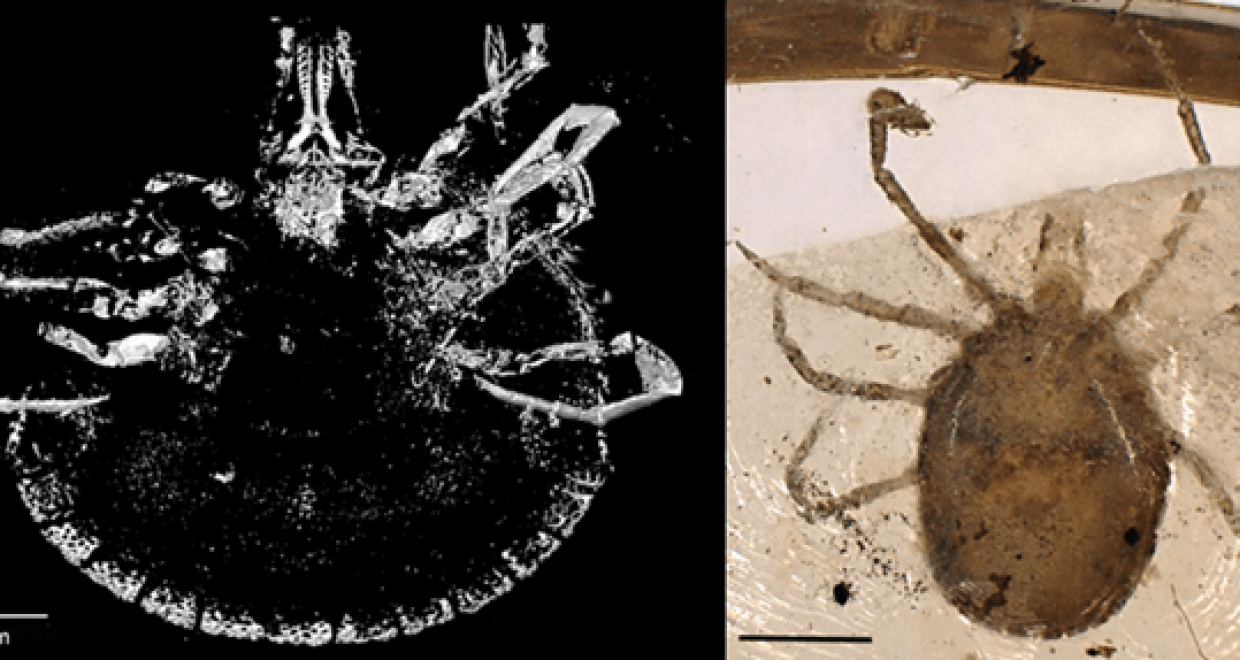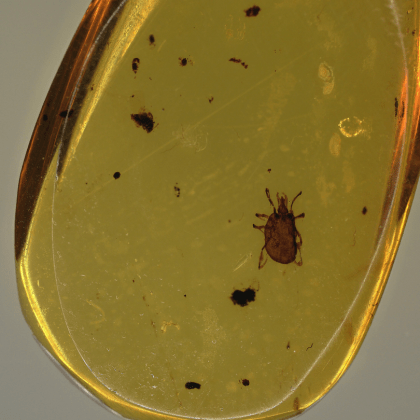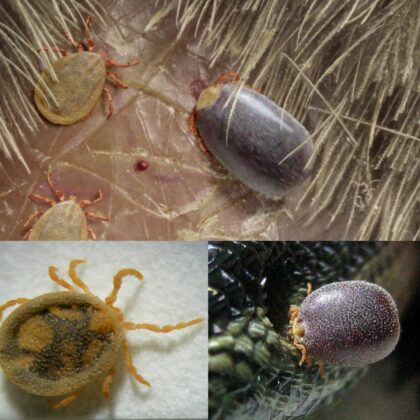Hard Ticks from Down Under in Burmese Amber
The latest Paper of the Month for Parasitology is “Hard ticks in Burmese amber with Australasian affinities” and is available Open Access.
Amber is a rich source of invertebrate fossils that constantly turn up new families, genera, and species. To become an amber fossil, an organism needs to be trapped in tree resin oozing from injured trees, which hardens and gets buried beneath sediment before fossilization at high pressure and temperature. Amber has been found at a number of localities across the world dated to various time periods. As such, Dominican amber is dated ~20-15 million years ago (MYA), Baltic amber dated ~45 MYA, New Jersey amber is dated ~94 MYA and Burmese amber as one of the oldest amber deposits dates at ~100 MYA.
The origin of Burmese amber is quite significant since the region it is found in has an interesting geological history. Myanmar and other south Asian countries was formed by accretion of various landmasses that moved northwards until they collided with Asia and amalgamated into the existing land mass south of the Himalaya mountains. Myanmar is squeezed between India and Thailand and is formed from two land masses that came together, the Sibumasu and West Burma terranes. The Hukawng basin, where Burmese amber is found, was postulated to be part of the West Burma terrane. Deciphering the origin of each of the land masses that make up southern Asia is one of the geological challenges from this region. These landmasses started to accrete ~40 MYA.
It is therefore of interest that Burmese amber was formed ~100 MYA, and therefore long before the land masses accredited, implying that Burmese amber fossils were trapped in amber a long way from their current locality. The West Burma terrane is thought to derive from northern Australia where it rifted ~150 MYA to drift across the Indian Ocean before colliding with Asia. At 100 MYA this landmass was located in the tropical equatorial regions of the world, an expected locality for the trees that produce amber resin.
It was therefore of considerable interest to discover tick fossils in Burmese amber that could be placed in extant genera only found in Australasia. These genera include Bothriocroton (7 extant species) and Archaeocroton (1 species found in New Zealand). The occurrence of these ticks with Australasian affinities link with the current geological hypothesis that the Burma terrane rifted from Australia and moved across the ocean before it accreted to Asia. Another interesting implication, is that while the amber is dated at ~100 MYA, the Burma terrane rifted from Australia ~150 MYA. This would imply that Bothriocroton and Archaeocroton, and by extension all lineages postulated to have diversified prior to the origin of these genera would be older than 150 million years. These include the prostriates (Ixodes), basal metastriates, the soft ticks and the Nuttalliellidae and raises the minimum age for these lineages to 150 MYA. This is an important implication for the origin of ticks, since studies dating an origin for ticks younger than 150 MYA would be inconsistent with this hypothesis. The data also support previous suggestions that the origin of ticks in general lies in Gondwanaland. This latest study is part of an unfolding saga of tick biodiversity found in amber that have far-reaching implications for the study of tick evolution.


The paper “Hard ticks in Burmese amber with Australasian affinities“ by Lidia Chitimia-Dobler, Jason A. Dunlop, Timo Pfeffer, Felix Würzinger, Stephan Handschuh and Ben J. Mans, published in Parasitology, is available Open Access.






